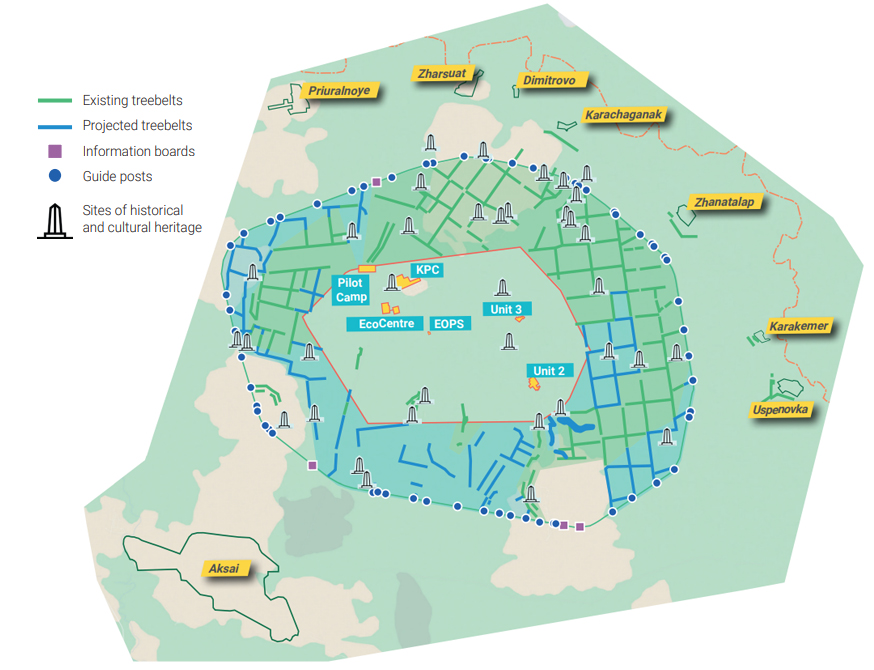Sanitary Protection Zone
New estimated Sanitary Protection Zone (SPZ) established within the Karachaganak field has been effective from 1st January 2018.
During 2018–2021, KPO has successfully completed the relocation of eleven of the existing eighteen air environmental monitoring stations. The relocation of these stations was scheduled due to the change of Sanitary Protection Zone to ensure correct performance of the continuous air monitoring and to comply with the RoQ legal requirements.
As part of the project “Development and upgrade of the Estimated Sanitary Protection Zone in the Karachaganak Field”, KPO contemplates activities for planting new trees and caring for existing tree-planting. Additionally, to inform the local communities and personnel, KPO provides installation of information signs at the SPZ boundary.
Fig. 11. Map of the Karachaganak field with SPZ marked, as of end 2021

In order to protect historical and cultural heritage sites from potential negative impact, the project also provides for the installation of appropriate signs at the boundaries of the protected heritage sites. Earlier, in 2019, KPO organized the large-scale archaeological research on this topic (see the details in the KPO Sustainability Report 2019, pp. 85-88).
In 2021, as part of this project, the Company performed the following activities:
- the full-scale inventory of all KPO tree-plantings within the Karachaganak Field and its SPZ was carried out;
- the sites were determined and the maintenance measures for the existing planted forest were suggested;
- the field-based survey was carried out and the new forestation was planned;
- SPZ demarcation was planned;
- suggestions for installing information boards at the boundaries of the protected historical and cultural heritage sites were developed;
- key project performance indicators were defined.
In 2022, completion of the third and final stage of the SPZ improvement project is scheduled –development of the detailed design documentation ‘The first landscaping phase and demarcation of the estimated SPZ’. The overall timeline of the entire project implementation includes the period from spring 2023 down to 2028. The total area of the sites planned for green construction for the entire project period will be 249 ha, of which 151 ha are covered by the existing plants, and 97.25 ha – the new ones. Construction of capital facilities in the process of project implementation is not foreseen. The work is expected to be carried out by a contractor.
Approvals on the project will engage all stakeholders: state authorities, economic organizations and agricultural producers.
Fig. 12. Key design solutions of the development and upgrade of the estimated SPZ of Karachaganak Project for 2023 – 2028

